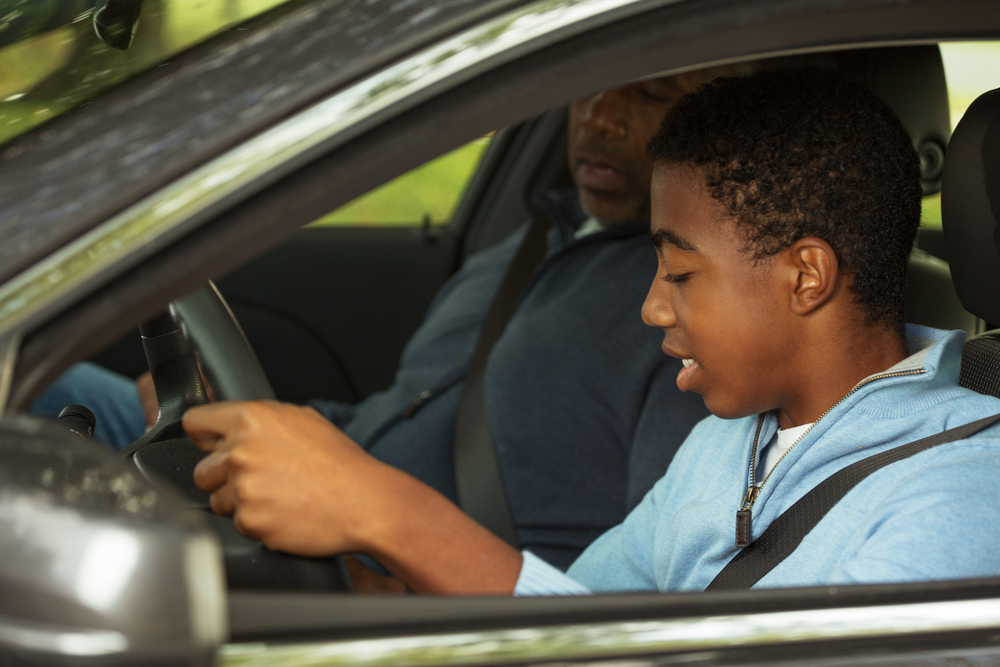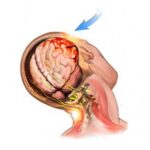 According to the CDC, car crashes are the number one cause of death for teenagers. In fact, drivers between the ages of 16 and 17 have the highest rates of involvement in car accidents, as well as the highest rates of injuries to themselves and others and deaths of others in car crashes in which they were involved, according to AAA’s Foundation for Traffic Safety. This is why teen driver safety is critical!
According to the CDC, car crashes are the number one cause of death for teenagers. In fact, drivers between the ages of 16 and 17 have the highest rates of involvement in car accidents, as well as the highest rates of injuries to themselves and others and deaths of others in car crashes in which they were involved, according to AAA’s Foundation for Traffic Safety. This is why teen driver safety is critical!
It isn’t until age 25 that the human brain reaches full maturity. The underdeveloped brain of a teenager doesn’t have the same ability to exercise sound judgment and restraint as an adult brain does. Experts believe that brain development directly correlates to increased car crash risk, which is apparent when you realize that young drivers are three times more likely to get into a car crash than people over 25 in the United States.
Dangers Teen Drivers Face on the Road
At Horn Law, we preach that there is no such thing as a safe teen driver, but teen driver safety is paramount when it comes to teaching your teen to drive. The everyday dangers are only made worse by the fact that teenagers are inexperienced drivers. Let’s start with a few hazards that your teen might come across on the road:
- Drunk drivers or drinking and driving: There is a lot of pressure on teenagers to drink. After a night of drinking with their friends, teenagers might decide it is a good idea to get behind the wheel. While teens are less likely to drive impaired, according to Teen Driver Source, their crash risk is “substantially higher” when they do drink and drive, even with low to moderate blood-alcohol (BAC) levels. When it comes to teen drivers, nearly a quarter of all fatal accidents involve underage drinking. Impairment from drugs poses the same risks. Teens also need to be cautious of other drivers because it is hard to tell if another driver has been drinking or using drugs. As the parent, it is your job to discuss the dangers of drinking and driving with your teenager before allowing them to drive.
- Distracted driving: Now, more than ever, distracted driving is proving to be an issue for drivers on the road. Since talking on a cell phone can double your teenage driver’s chances of being in an accident, it is crucial that you have a serious discussion about distracted driving with your teen. Statistics show that 12 percent of drivers involved in fatal distracted driving accidents were between the ages of 15 and 19. Discuss the importance of staying focused on driving when behind the wheel.
- Aggressive or reckless driving: As people continue to get busier, aggressive and reckless driving continues to become more of a problem. Warn your children about drivers who speed, cut others off, and display other risky behaviors. Advise your children to give these drivers space and remain calm when they come across these dangerous drivers.
- Fatigue: Driving while tired can be just as dangerous as driving while under the influence of drugs or alcohol. Teen Driver Source states that being awake for 18 hours has similar effects to the body as having a BAC of 0.05, which is considered legally intoxicated.
- Driving at night: While most adults drive at night without a second thought, teenagers face a greater risk when driving at night. The National Safety Council found in 2016 that 18 percent of crashes involving teenagers between 15 and 19 occur between 9 p.m. and midnight. Before unleashing your child on the road at night, take time to provide supervised instruction and practice between dusk and dark hours.
- Driving with passengers: Having passengers in the vehicle increases the likelihood that your teenager will be distracted behind the wheel. Talk to your teen about passengers and your expectations regarding other people being in the vehicle with your new driver.
- Poor road conditions: Unexpected road conditions can be problematic for inexperienced drivers like teenagers. Construction, inclement weather, and other threatening conditions can lead to accidents for teen drivers as they have to make quick decisions about how to proceed. It is a good idea to practice in all kinds of conditions to help your teen better navigate them in the future without you in the vehicle.
- Joyriding: Your teen’s guard is likely to come down when they are out joyriding, which means that they aren’t going to be as aware as they typically would. If you aren’t comfortable with your teen going joyriding, it is something that you can talk about allowing after they have more experience driving.

How to Teach Safe Driving to Your Teen
Preventing deadly car accidents starts with you teaching your teenager how to behave appropriately on the road. You can start by making driving safety a household priority. By doing this, you can help reduce the risk of collisions that could lead to serious injuries or fatalities.
As one of the best car accident lawyers in Kansas City, Doug Horn feels that it is his duty to educate parents on encouraging safe driving habits in their teenagers proactively. While it all starts with providing a good example for your teen, there are other things you can do to ensure that you teach your teen safe driving habits.
First, you should go on supervised drives with your teenager and stress teen driver safety. Try to leave other children at home to prevent unnecessary distractions. Log at least the number of hours required by your state for your child to get a license; if you can get in more hours, you are setting your teen up for better driving habits.
Talk to your teenager about local driving laws, proper driving routes, and your expectations, including times you feel it is appropriate for them to drive and any personal rules you have implemented about their driving. If you don’t feel your teenager is ready to drive safely, it isn’t time to set them loose with the keys.
Safe Driving Tips for Teens
Driving conditions vary greatly depending on the location, day, and time of day. To help you teach your teen how to drive safely regardless of the conditions, we have compiled a few special tips for you to share with your new driver.
Driving in Inclement Weather
Weather conditions can lead to dangerous driving conditions, and your teen needs to be prepared to face these unpredictable circumstances. According to the AAA Foundation for Traffic Safety, winter weather alone leads to more than 2,000 road deaths every winter. Here are a few inclement weather driving tips to discuss with your teen drivers:
- Stay home unless absolutely necessary to get out in the bad weather.
- Turn your headlights on so that other drivers can see you.
- Check that your tires are properly inflated and have plenty of tread.
- Use your windshield wipers in snowy or rainy conditions.
- Always keep at least a half a tank of gas in your vehicle.
- Don’t use cruise control in snowy and icy conditions.
- Slow down to account for the lower traction on snow and ice.
- Accelerate and brake slowly to avoid skidding on snow and ice.
- Add extra space to your following distance to allow for slower stopping.
- Avoid stopping when possible to prevent the increased inertia needed to get going again.
- Don’t apply extra gas going up hills because you will make your wheels spin; instead, gain extra inertia before you get to the hill to get you over the top. When you get to the top of the hill, reduce your speed and go slowly down the hill.
- Don’t stop when going up a hill.
- Keep both hands on the wheel and avoid jerky movements.
- Avoid unnecessary lane changes.
- Avoid braking during a turn; instead, brake before the turn to avoid a spinout.
- If you start to spin, hold the wheel steady and release the gas, but do NOT hit the brake. Steer the car the direction you want to move and allow the car to regain traction.
- Remember that bridges and overpasses freeze before roads on solid ground.
Foggy weather conditions pose other problems. The first is that many people unknowingly speed up because when you look out the window in dense fog, you appear to be driving slowly. Headlights are a must in foggy conditions when visibility is already extremely low. Without headlights, your car becomes difficult to see, which could lead to an accident. Fog lights, if your car has them, can help increase your visibility in these conditions, as well. Even if you think it is hard for others to see you, don’t use your high beams, because they reflect off the water droplets in the air, decreasing your visibility.
It is also essential to use the lines on the road to stay in your lane during low visibility driving conditions. Additionally, increasing your following distance can prevent a crash from occurring.

Highway Driving Safety Tips
It might seem like there isn’t much to talk about when it comes to highway driving safety, but here are a few things you should discuss with your teen driver.
- Avoid driving when you are drowsy or impaired in any way.
- Drive at a safe speed. Respect the speed limit and alter your speed to go with the flow of traffic or weather and road conditions.
- When entering the freeway, get up to a safe speed and use your turn signals and mirrors to ensure that you are safely merging into the flow of traffic.
- Try to stay off freeways when the weather is bad or when drunk drivers are more likely to be on the roads.
- Stay out of other vehicles’ blind spots.
- Leave plenty of space between your vehicle and the vehicle in front of you. Follow the three-second rule to ensure that you can safely stop without hitting another vehicle should the car in front of you suddenly stop.
- Stay in the right lane unless you need to pass another vehicle. In some states, it is illegal to drive for long distances in the left lane if you aren’t passing another car. It is also important that you don’t try to pass other vehicles in the right lane.
- Avoid distractions and stay focused on the road ahead of you. You must be scanning the road in the distance so that you can react to any potential hazards promptly.
City Driving Safety Tips
Driving in the city comes with its own unique set of challenges. Here are a few topics to discuss with your teenager before they start driving in the city.
- Always leave with plenty of time to get to your destination.
- Go with the flow of traffic while still obeying the speed limit. Be prepared to stop for traffic hazards and pedestrians.
- When coming up to an intersection, be prepared for the light to change. If an intersection doesn’t have a light, check for a stop sign.
- Be aware of one-way streets.
Try to avoid driving in the city during the busiest part of the day—usually between 7 a.m. and 9 a.m. and then between 4 p.m. and 6 p.m.
Additional Quick Tips for Keeping Your Teen Safe on the Road
Here are a few quick tips for keeping your teenager safe while behind the wheel:
- Set a good example when your teenagers (and younger children) are in the car with you.
- Create a Teen Driving Agreement that lays out your rules and expectations for your teen to have driving privileges. We encourage parents to approach the topic in a manner that explains that the rules are put in place for the safety of the teen and not just for parental control.
- Keep up the communication with your teenager. Help them make good decisions and stay open about when the car is being used and what it is being used for. It can also be a good idea to discuss routes, destinations, and timetables with your son or daughter. Having your child check in when they have arrived at their destination can also provide peace of mind for parents.
- Practice driving with your teen frequently. Be sure to log the appropriate number of hours your teen drives under your supervision in accordance with your state laws.
- Never choose convenience over safety. We encourage parents to step in and make alternative transportation arrangements when weather or road conditions are bad instead of having your teen try to drive in unfamiliar or dangerous conditions.
Check out this parent information for teen driver safety from the CDC for more recommendations.
Read our previous blog Drive By Example: Show Your Teens How to Drive Safely for more information regarding teen driving.





